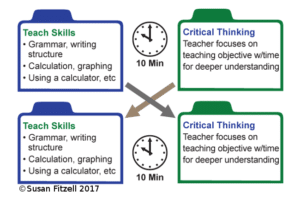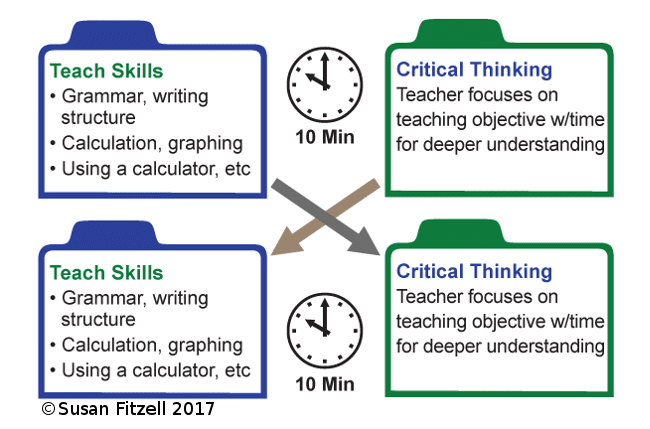Exploring the Teach Half, Then Switch Co-teaching Model
I walked into an eighth-grade language arts classroom in Kinston, North Carolina, to find two co-teachers and 28 students absolutely focused on the lesson.
The desks and chairs had been arranged into two sections: seven desks and chairs faced seven more desks and chairs, creating a makeshift conference table. On the other side of the room, the same arrangement was repeated.
For this co-teaching model, each teacher was seated at one “conference table,” working with 14 students apiece.
At one table, a teacher was reviewing the skill of drawing inferences from text, using several poems scattered around the desks. At the other table, the teacher was reviewing grammar and test-taking skills, getting the students ready for the upcoming state test.
After 10 minutes, a timer went off, and the groups switched places. Now, the students who had been learning to draw inferences from poetry were learning grammar, and vice versa.
 Afterward, I asked the teachers about their experience implementing “Teach Half Then Switch” to covers skills and rigor.
Afterward, I asked the teachers about their experience implementing “Teach Half Then Switch” to covers skills and rigor.
“I love teaching poetry,” the general education teacher exclaimed, “but this is eighth grade and we have 28 students in the class, mostly boys. Try to get eighth-grade boys interested in poetry. It ain’t easy!” she laughed. “But with this small group, I can do it.”
Likewise, the special education co-teacher liked teaching the grammar section. “I’m not comfortable teaching poetry or drawing inferences. However, I’ve spent my entire career as a special educator correcting grammar and teaching students how to take a test. That I feel confident with.”
Now, these two teachers could have stuck with the tried-and-true “One Teach One Support” method, with the general education teacher reviewing drawing inferences from poetry and the special education teacher supporting students in the background. They could have “chunked” the lessons, spending 10 minutes on drawing inferences and then switching to reviewing grammar and test-taking skills. This method is fine, but they would have been teaching all 28 students at once and trying to keep them focused on the lesson.
By instead implementing the “Teach Half Then Switch—Skills and Rigor” (a topic I cover in my latest book) co-teaching model, they were able to engage a much smaller group of 14 students in targeted instruction. Students who might present behavior problems were divided between them, making potential behavior issues easier to address.
Here are some tips to implement this in your classroom:
- Arrange student desks so that there are two sections of desks and chairs.
- Strategically divide the class into two mixed-ability halves, with each teacher taking one half. Sit on opposite ends of your makeshift “conference tables” so you can see the entire room and signal each other.
- One teacher teaches their half of the class that day’s objective with appropriate rigor for the class or grade level.
- The other teacher teaches their half of the class focusing on a skill necessary for the subject. For example, students might be reviewing and relearning the skill of grammar or creating charts and graphs, or how to read a map (topographical, weather, or geographic), etc.
- After 10 minutes, switch. Either the students or the teachers can move.

Bring Susan to your campus!
Featured seminar – Co-teaching and Collaboration

